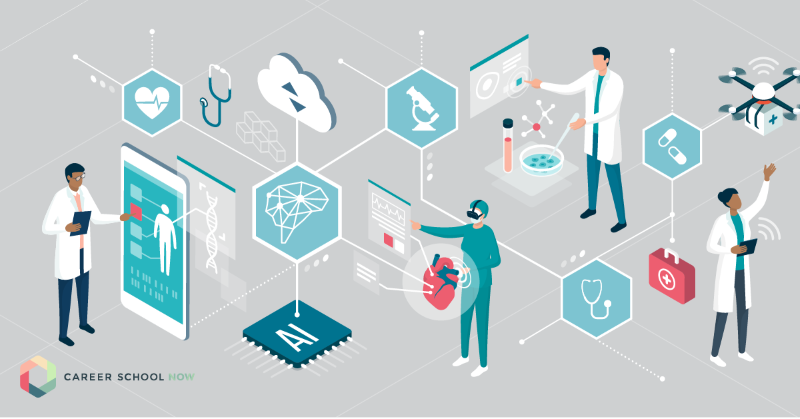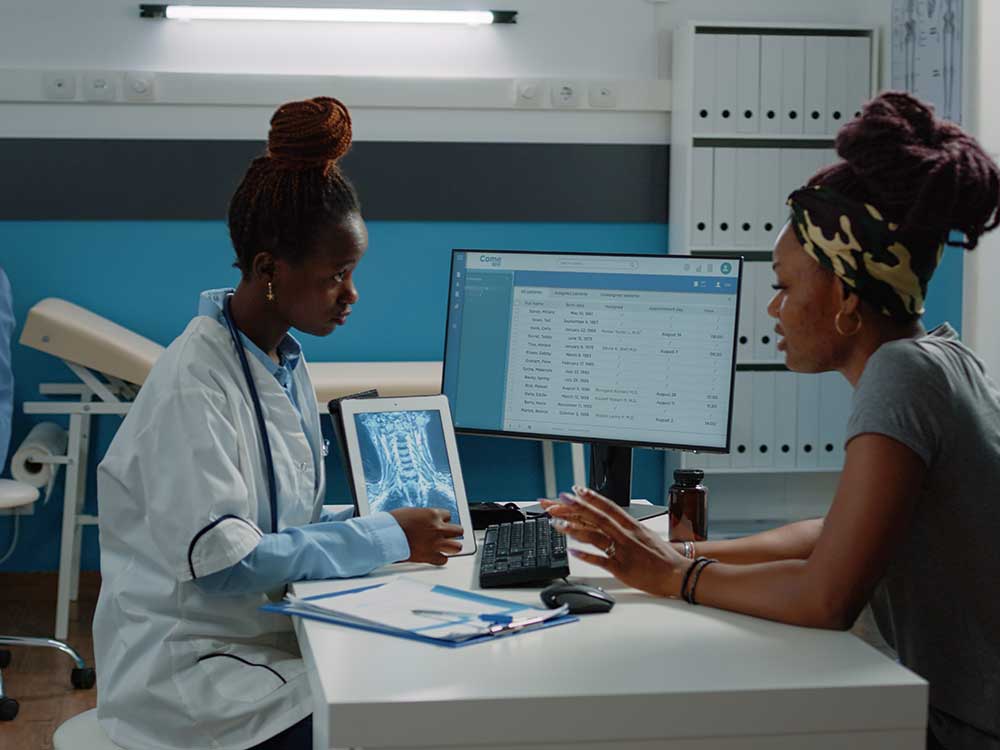Medical Administration Careers: Discovering Task Opportunities and Wages
Wiki Article
Best Practices in Medical Administration for Improving Performance and Lowering Prices
In the ever-evolving landscape of healthcare, the search of best practices in medical management is vital for enhancing efficiency and suppressing expenditures. By integrating advanced modern technologies such as electronic health and wellness documents and telemedicine, healthcare providers can enhance procedures and improve person treatment.Leveraging Advanced Modern Technology
The combination of digital services right into health care systems has actually changed the method centers run, improving processes and improving individual treatment. By streamlining person information, EHRs get rid of the need for difficult paperwork and assist in smooth communication among healthcare providers.Telemedicine is another technological improvement that has actually changed client communication. It provides benefit for both people and medical care professionals by enabling remote appointments, which can minimize the requirement for in-person check outs and optimize visit scheduling. Furthermore, telehealth systems can expand medical care access to rural or underserved areas, bridging gaps in care distribution.
Additionally, the use of Artificial Knowledge (AI) and machine discovering is coming to be significantly prevalent in anticipating analytics, allowing for early detection of potential health and wellness issues and even more enlightened decision-making. These innovations, when integrated properly, can boost diagnostic accuracy and personalize client treatment strategies, eventually leading to improved medical care outcomes and functional efficiency.
Optimizing Source Allocation
By purposefully handling sources such as employees, devices, and financial resources, health care facilities can significantly enhance their functional efficiency, improve patient outcomes, and lower unneeded expenditures. The initial step in optimizing source allocation includes carrying out an extensive evaluation of existing assets and determining locations where sources might be underutilized or exhausted.Focusing on resource allocation based on patient needs and service demands is essential. This involves aligning sources with high-demand locations, such as emergency situation care or specialized therapies, to guarantee timely and effective patient care. Executing flexible staffing versions can additionally optimize labor resources by readjusting workers allotment in response to changing client volumes. Furthermore, accepting telemedicine and other technological solutions can ease physical resource restraints by supplying alternate avenues for patient-provider communications.
Economic sources must be meticulously monitored and allocated with calculated insight to support both short-term operational requirements and lasting institutional goals. This consists of investing in training programs that boost personnel expertises and embracing energy-efficient methods that minimize operational expenses (medical administration). Inevitably, an enhanced source allotment method promotes a sustainable medical care environment that is responsive, effective, and economically prudent
Streamlining Operations Procedures
When health care centers goal to enhance operational efficiency, enhancing process procedures comes to be a critical focus. Reliable process decrease redundancy, remove unnecessary actions, and improve sychronisation amongst health care professionals. This approach not just accelerates service distribution yet likewise enhances the quality of individual care.
Following, innovation integration plays a significant role in improving process. Carrying out electronic her comment is here health records (EHRs) and digital medical professional order entry (CPOE) systems lowers paperwork, minimizes human error, and guarantees information is obtainable to all appropriate personnel. Furthermore, leveraging telemedicine platforms can streamline client examinations and follow-ups, minimizing the strain on physical infrastructure.

Eventually, streamlined process bring about cost reductions and improved patient contentment, cultivating a more sustainable healthcare environment.
Enhancing Information Administration
Building upon structured process, optimizing data administration ends up being an important component in progressing health care management. Reliable data monitoring systems are crucial for keeping precise patient records, improving decision-making, and making certain compliance with governing standards. By applying robust information administration services, health care centers can enhance the top quality of client treatment while concurrently lowering functional expenses.One trick aspect of boosting information management is the combination of advanced digital wellness record (EHR) systems. These systems assist in the smooth exchange of person details throughout different divisions, minimizing duplication of examinations and lessening mistakes. A well-designed EHR system sustains information analytics, making it possible for doctor to identify fads and make notified choices pertaining to individual care.
Furthermore, safeguarding client information is paramount. Embracing thorough cybersecurity actions, consisting of file encryption and regular audits, makes certain the integrity and confidentiality of sensitive information. This not only safeguards individuals however also keeps the establishment's online reputation.
Purchasing team training is one more vital aspect. Enlightening medical care professionals on information management methods enhances their capability to effectively utilize modern technology, resulting in enhanced client results. Finally, improving information administration via advanced modern technology and detailed training is vital for accomplishing effectiveness and price decrease in clinical administration.
Fostering Collaborative Interaction
A vital element in progressing clinical management is cultivating collaborative communication amongst healthcare professionals. Efficient communication is critical for guaranteeing seamless person care, optimizing therapy outcomes, and minimizing errors. By urging open discussion and control throughout multidisciplinary teams, healthcare organizations can enhance their operational performance and decrease unneeded prices.Central to this method is the assimilation of interaction innovations such as electronic health documents (EHRs) and secure messaging platforms, which facilitate the fast exchange of vital patient details. These devices enable doctor to accessibility and share data in genuine time, making sure that all employee are informed and lined up in their decision-making procedures. Normal team meetings and interdisciplinary rounds can further promote a culture of partnership and liability.
Educating click here to find out more programs concentrated on boosting communication abilities are likewise vital. These programs can aid personnel develop the capacity to convey details plainly and listen actively, therefore decreasing misunderstandings and promoting a supportive work setting. Additionally, embracing standard communication procedures, such as SBAR (Circumstance, History, Evaluation, Recommendation), can enhance the exchange of info, making certain that critical information are shared succinctly and efficiently. Inevitably, promoting collaborative interaction brings about boosted health care shipment and price savings (medical administration).

Conclusion
Incorporating innovative technology, such as digital wellness documents and telemedicine, together with enhanced resource allotment and streamlined workflow processes, is important for improving efficiency in medical management. Reliable information monitoring and cultivating collective interaction among healthcare groups are vital for reducing redundancies and boosting care top quality. By focusing on preventive care and participating in top quality renovation initiatives, healthcare companies can attain substantial cost financial savings and boosted patient results, consequently ensuring lasting healthcare shipment in an increasingly intricate setting.Report this wiki page